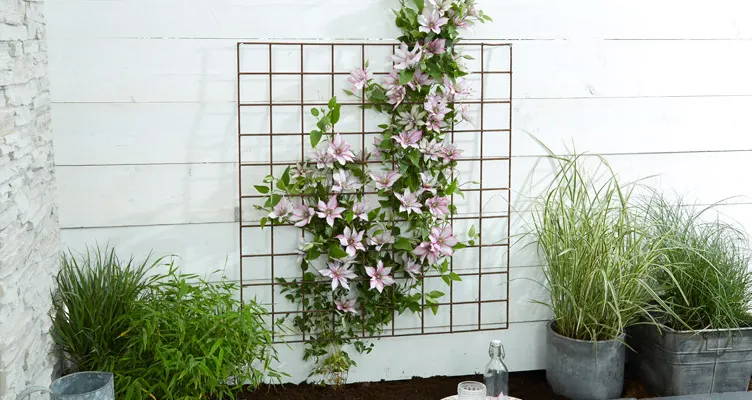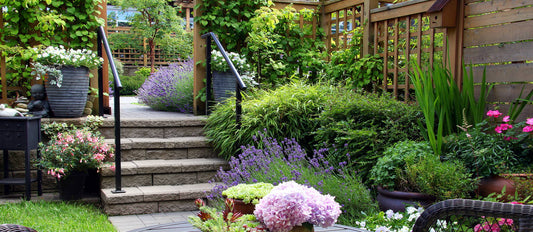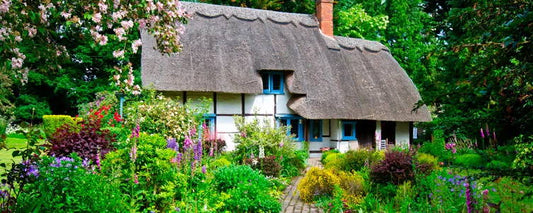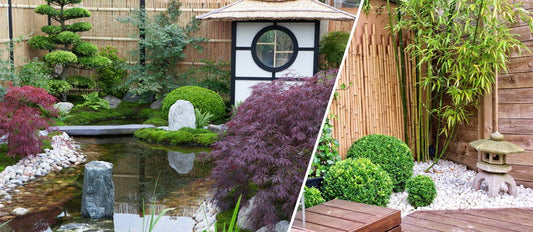Climbing plants are a great way to brighten up your garden without taking up a lot of space on the ground. These plants give your plain exterior walls, fences and pergola extra colour and a touch of excitement. Before you can enjoy this splendour, you first need to find the perfect spot for them. How do you actually plant climbing plants? And what is important to remember when caring for climbing plants? Read all about climbing plants here.
Climbing plant or espalier
Did you know that not all climbing plants attach themselves to a wall or fence? Some climbing plants first need a little help to get started with climbing. We call these plants espaliers. The climbing rose is an example of an espalier. Espaliers do not have the ability to climb on their own and need a frame, mesh or arch to guide them in the right direction. By providing them with the right support, the new shoots can also be guided in the right direction. You can guide the plants however you wish.
Climbing plants do have the ability to cling to a wall, fence or pergola by themselves. For example, the Hedera uses its sticky roots for climbing. The Hedera attaches itself to the wall, fence or pergola with its sticky roots. These roots are strong enough to withstand the wind. The Hedera is hardy and can also handle plenty of sun, meaning that you can enjoy this plant for many years. Another climbing plant, the Clematis, attaches itself using its winding leaf stalks. If you want this flowering climber to grow along a wall, it needs a climbing frame. Do you want the Clematis to climb along a pergola? Considering putting mesh around the pole of your pergola. The Clematis will then climb up the mesh by itself.
All these climbing plants and espaliers can be found at Bakker.com in the climbing plants section. Discover our wide range of climbing plants now.
How do you plant a climbing plant?
As you have already discovered, there is a big difference between climbing plants that are able to climb on their own and espaliers, which are not able to do this. Because of this, before you start planting, you must think about where you are going to place the plant. Then you can get stuck in — our step-by-step plan explains the best way to go about this:
- Find the ideal place for your climbing plant or espalier. Consider the climbing support that will be needed, the amount of sunlight and space that the plant will need in order to flourish. For example, the Hedera is not suitable for a plastered wall.
- Secure any climbing supports to your fence, wall or pergola. For espaliers and some climbing plants, climbing supports are necessary for them to grow well. It is therefore important to make sure that the climbing supports are well secured.
- Dig a large hole about 20 to 25 centimetres away from the climbing supports.
- Make sure the root ball of the plant is nice and moist and place it at the correct depth in the hole, angled towards the climbing supports. More detailed information regarding how to plant your product can be found on our website in the product information section. We recommend that you read this beforehand.
For example, some climbing plants need the roots to be just below the surface of the ground, while others need the roots to get some sunlight. - When filling in the hole after planting, improve the quality of the soil with new potting soil or add fertilisers. Detach the tendrils from the stick. For climbing plants that need a little more help to get started and espaliers, attach the tendrils to the climbing supports.
- Finally, water the plant straight away.
It is important to note that some climbing plants can be planted in the shade, but the roots need sunlight. Find out exactly how this works on our website in the product information section for the plants in question.
How do you care for a climbing plant?
Now that the climbing plant is in the ground, you naturally want it to grow well and in the direction that you have in mind. For this reason, it is important that you continue to guide the climbing plants properly. Do you want the climbing plant to only grow upwards? Then simply cut off the horizontal shoots and tie in the vertical shoots.
It is also important that you continue to prune climbing plants. A number of climbing plants continue to grow until they no longer have anything to hold onto. They can also far outgrow the fence. The best time to prune climbing plants is early spring.




